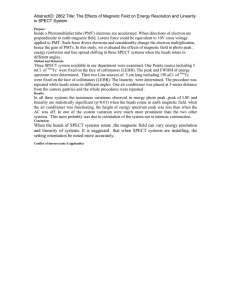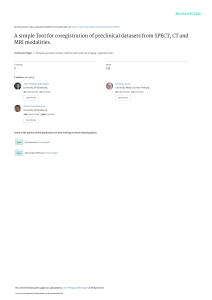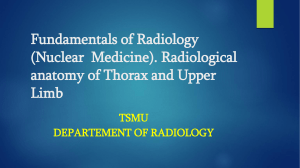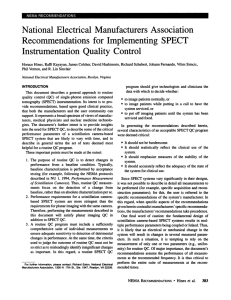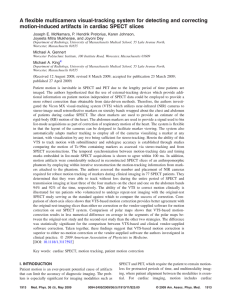AbstractID: 8435 Title: Problems with two automatic methods for SPECT-SPECT... MRI Volume Matching
advertisement
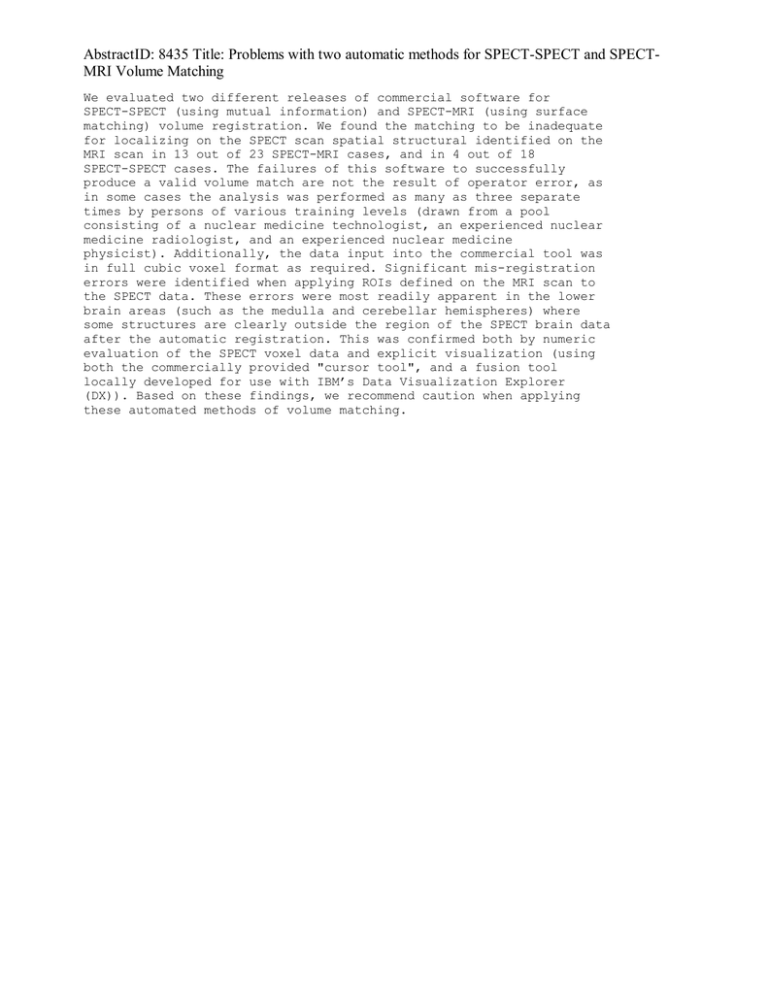
AbstractID: 8435 Title: Problems with two automatic methods for SPECT-SPECT and SPECTMRI Volume Matching We evaluated two different releases of commercial software for SPECT-SPECT (using mutual information) and SPECT-MRI (using surface matching) volume registration. We found the matching to be inadequate for localizing on the SPECT scan spatial structural identified on the MRI scan in 13 out of 23 SPECT-MRI cases, and in 4 out of 18 SPECT-SPECT cases. The failures of this software to successfully produce a valid volume match are not the result of operator error, as in some cases the analysis was performed as many as three separate times by persons of various training levels (drawn from a pool consisting of a nuclear medicine technologist, an experienced nuclear medicine radiologist, and an experienced nuclear medicine physicist). Additionally, the data input into the commercial tool was in full cubic voxel format as required. Significant mis-registration errors were identified when applying ROIs defined on the MRI scan to the SPECT data. These errors were most readily apparent in the lower brain areas (such as the medulla and cerebellar hemispheres) where some structures are clearly outside the region of the SPECT brain data after the automatic registration. This was confirmed both by numeric evaluation of the SPECT voxel data and explicit visualization (using both the commercially provided "cursor tool", and a fusion tool locally developed for use with IBM’s Data Visualization Explorer (DX)). Based on these findings, we recommend caution when applying these automated methods of volume matching.

